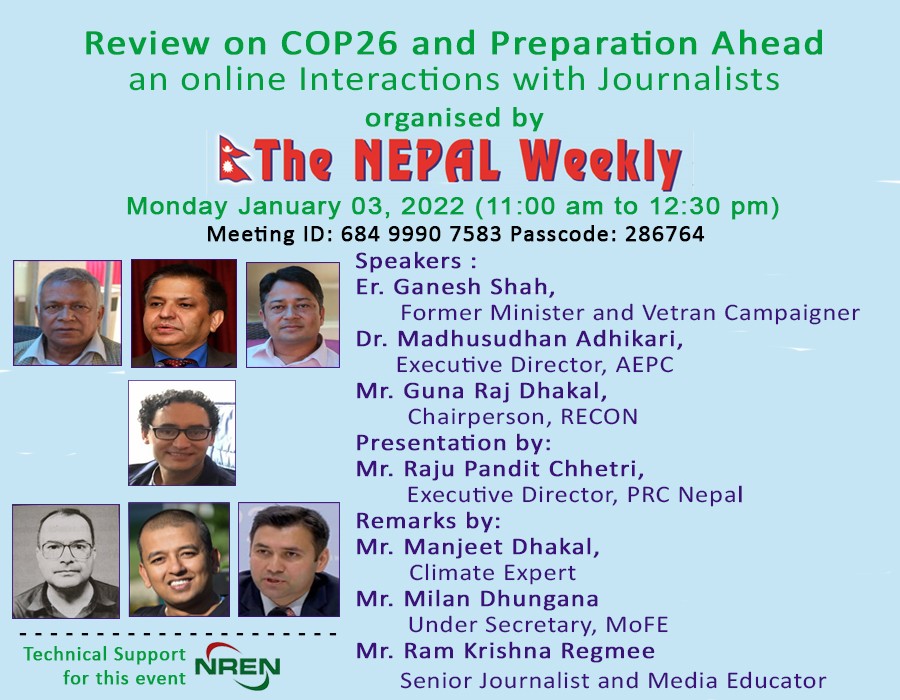 The Nepal Weekly
The Nepal Weekly  January 25, 2022
January 25, 2022By Er. Ravi Khanal
One lesson SDGs (Sustainability Development Goals)-workers should not forget in pursuing SDGs at local levels in Nepal is: applying gender perspective to all areas covered by the 17 Goals. Had the elected officials of 753 local governments of the country taken that point seriously in planning and implementing development works and activities in the last five years, Nepali women’s status would have changed significantly today.
“The gender based discrimination would have been avoided in Nepali society in a remarkable manner,” say experts on integrating gender perspective with SDGs adding” Nepal would have created an enabling environment to pursue a culture of sustainability further in the next five years – 2022-2027.”They underline the need to regard gender equality (SDG-5) as not only a stand-alone target but also a condition to be fulfilled as a priority for clearing way to other purposes related to sustainability-regime.
Ending poverty (SDG-1)and doing away with hunger (SDG-2), for example, cannot be achieved without making all women at local levels capable to exit poverty trap and able to access the food and nutrition they need. Both could be described as fundamentals for ensuring healthy lives (SDG-3) and quality education (SDG-4)for all in society. Development workers particularly planners, policy makers, law-makers and implementers should understand the reality and appreciate the importance of applying gender perspectives to all sectors covered by SDGs.
The same was lacking in the past and now is the time to change the approach. As all local governments in Nepal complete in near future (May 2022) their five-year tenure which started with 2017-election, SDGs-workers and stakeholders should work hard to make the new team aware of the need to integrate gender perspective with SDGs in a systematic manner.
The media and the civil society should also encourage the trend of integrating gender perspective with SDGs. They should play instrumental role in clarifying the concept and appealing to people to adopt the policy of regarding gender perspective as key to ensure sustainability with equality.
The ward levels (6,743 in number) of municipalities (urban and rural) offer enormous opportunities for creating a strong foundation of integrating gender perspective with development activities designed to fulfil one or more of the SDGs. If a suitable application-modality could be developed at that level the whole nation would feel the vibration of change towards sustainability with equality. The same would serve as a formula for not leaving anyone behind, the motto of the SDGs 2030-agenda.
The path forward is of course not comfortable. Obstacles like COVID-19 pandemics, natural disasters and other social financial barriers would be there to disturb, disappoint and distract. But sincere and consistent efforts to construct the way towards the great goal of sustainability with equality would ultimately create a positive enabling environment at the grass-root levels of Nepali society. The same would take the country closer to some sort of fulfilment of SDGs over the next eight years.
Er. Khanal is the Manager, Kalpa Academy Centre for Governance and Sustainable Development; Secretary, Nepal German Academic Association (NEGAAS)




